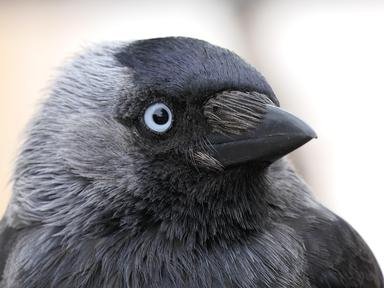Quiz Answer Key and Fun Facts
1. Stercorarius parasiticus. A summer visitor to the North of Scotland, this dark, fast seabird comes to land only to breed. While nesting it is very aggressive to its neighbours.
2. Regulus ignicapillus. One of the UK's smallest birds, its need to feed on insects and spiders means it is almost constantly on the move. It has an orange stripe over the head which is distinctive.
3. Falco tinnunculus. Nearly everyone has seen at least one of these small birds of prey searching for their favourite rodents over a piece of rough ground or motorway embankment. Some other species of British birds can float in one spot with help from a headwind, but this bird is the only one that can truly hover in still air.
4. Fratercula arctica. Another unmistakable species, this small black and white seabird with its orange feet and large multicoloured bill can be seen in their thousands on cliffs in summer with their beaks full of sand eels.
5. Cygnus olor. This is one of the largest and most recognisable water birds which can be seen on most any lake or large pond, even in public parks. Their plumage is pure white with a black based orange beak. Although their name suggests otherwise, these birds do make a noise.
6. Mergus serrator. Here we have a beautiful duck of the sawbill family, similar in colouring to a mallard but with a distinctive tuft on the head.
7. Emberiza citrinella. This species is a small sparrow-sized member of the bunting family, the male being the most easily identifiable with its yellow head and white tail bars. This species is omnivorous and the male has a familiar song described as sounding like "a little bit of bread and no cheese" repeated over and over.
8. Carduelis cannabina. This sparrow-sized bird of open farmland has a distinctive red breast and red forehead in the males, the females being more or less all brown. It has a fluttery undulating flight and twitters while on the wing.
9. Apus apus. Most people think of this superb flier as being all black, but in reality it is a dull sooty brown. They very rarely land and even sleep on the wing. A summer visitor, they can be seen flying extremely fast through towns and built up areas with a high pitched screech commonly heard. A forked tail will help with identification.
10. Sturnus vulgaris. One of Britain's commonest birds, this species is at first sight a fairly dull black bird, but if looked at closely its feathers are a beautiful iridescent dark green with small white spots. Flocks contain thousands of individuals and can be seen performing elaborate manoeuvres before settling to roost.
Source: Author
mikew41
This quiz was reviewed by FunTrivia editor
crisw before going online.
Any errors found in FunTrivia content are routinely corrected through our feedback system.

